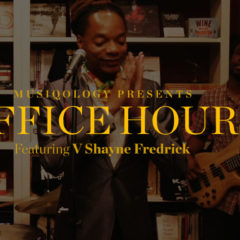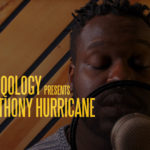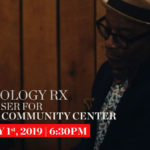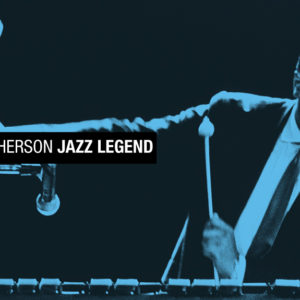Two weeks ago, Dr. Guy decamped for South Africa to deliver a keynote lecture at the annual congress of the South African Society for Research in Music. Titled “Hide/Melt/Ghost: Writing the Early History of African American Music Culture,” the paper discussed how cultural memory, artistic invention, conjuring traditions, attitudes about “racial integrity” and New World expressions of Christianity combined to create a distinctive music. “What happens when the science of musicology meets ghosts,” he asked?
Dr. Guy also provided some thoughts on his first trip to Africa in a travelogue-style blog. In his trademark voice, Guy walks us through the streets of Soweto and the clubs of Durban, where musics become a common language spreading across time and space.
It seemed only poetic that we’d get one of those “under-the-radar” taxis outside of New York’s JFK International Airport and that it would be driven by an affable African man from the Ivory Coast. Of course, he was learned, multi-lingual and well-versed in the political and economic scenes of the U.S. and about many of the countries throughout Africa. And he traveled back and forth regularly to stay on top of things.
I learned much during my recent trip to South Africa. The people I met from all walks of life were much like our taxi driver: completely aware and educated about political history, spoke two or more languages (one bellman at a hotel spoke seven), and were visibly excited to interact with an American. After the “What the hell about Donald T.” question, conversations were always informative and compelling. One could get used to that.
The people I met from all walks of life were much like our taxi driver: completely aware and educated about political history, spoke two or more languages
I’d never travelled to Mother Africa. She didn’t disappoint. As an initial immersion, South Africa was by all accounts fascinating, and I’ll remain grateful to the South African Society for Research in Music’s invitation to deliver a keynote address at its ten-year anniversary. The fall of Apartheid casts a long shadow over many conversations, museums exhibitions, music and conference presentations to this day. Even in the midst of an absolutely bonkers presidential election year in the US, I’d never quite been in an atmosphere like this–where people were openly wearing their political views on their sleeve. There was a sense that the only way to move forward toward a fair and just future was to have difficult conversations that might include public protest and dissent.
There was a sense that the only way to move forward toward a fair and just future was to have difficult conversations that might include public protest and dissent.
One metaphor that comes to mind is that of being near the end of a difficult pregnancy: there’s no turning back and the moment is defined by the necessity to push on toward the fruit of a successful delivery. I didn’t happen to meet anyone who was in open denial about the challenges facing the country. Even the tour bus guides, a global ilk notoriously known to stick to the “what’s great about us” script, spoke in refreshingly frank terms about the racial machinations of South Africa’s past and present. I loved it.
I hit the big cities: Johannesburg, Cape Town, and Durban. The conference took place at the University of the Free State in Bloemfontein. Each had a distinct personality. Johannesburg’s bustle reminded me of New York. Cape Town’s stunning beauty was paradise, somewhat like San Francisco’s sea, valley, and mountain vistas. Durban’s intensity put me in the mind of Chicago for some reason: big shoulders and intense with a whole lot of hustling going on.
During my first night in Johannesburg, a really smart and tight band named the GuruLogic band was playing in the lobby of the hotel. They were playing inventive renditions of standards like “Mas Que Nada” and covers of pop hits like Usher’s “Good Kisser.” What was unique about this group’s instrumentation is that it consisted of Fender Rhodes, electric bass, alto sax and a DJ, who handled the rhythmic underpinning of the ensemble with drum sequences. It gave the overall feel of the group a contemporary, popish sound—a blend of pop and NuJazz that was infectious and designed to appeal across generations. I couldn’t resist their enthusiastic request to sit in for a tune. It was definitely a highlight: I could see myself gigging in South Africa. These musicians had a great feel and were just plain fun to jam with.
The tour of Soweto was illuminating. The idea that student protests from this township, which is near Johannesburg, changed the entire social landscape as the world watched was awe-inspiring. This was particularly true for me as I watched students milling about in their crisp school uniforms (it was winter there), only casually aware of the steady stream of tourists invading their space. It was like walking on hallowed ground.
The idea that student protests from this township, which is near Johannesburg, changed the entire social landscape as the world watched was awe-inspiring
Durban was another trip. Nestled on the Indian Ocean side of the country, one definitely got that “Miami vacation” feeling: lots of visitors and attractions converging on an idyllic setting. The beaches, which were filled with black swimmers and sun worshippers, reminded me in a weird way of the segregated beaches I experienced on Lake Michigan’s south shore when I was a child. The fact that I was in a majority black country was driven home by what was for me a fascinating scene: a beach where there were fewer white folks than black and where young, black white guards were common. Because of the Indian migration and an Indian Ocean centered slave trade, the available cuisine was singular. The popular dish “bunny chow” is made from a spicy variety of curries, which is stuffed in a hallowed out bread loaf. It first appeared during the days of Apartheid when it was forbidden for blacks to enter restaurants. When a determined Indian restaurateur would serve his black customers takeout from a back entrance, he wanted to keep the dishes hot and neat and invented the now-famous dish for that purpose.
I’ll never forget seeing people blend traditional dance with more popular styles
I caught a set of music at a new club in Durban called The Chairman, which that Saturday night featured the incomparable singer, songwriter and guitarist, Tu Nokwe. She played an extra-long and energetic set of originals and classic Mariam Makeba covers. It was powerful to sit in an audience of South Africans and experience their responses to these songs. One could definitely feel the deep and meaningful connections they felt to the lyrics in a setting where they were more rally cry than pop song. Our hosts for the evening, the former New Yorker, Professor Salim Washington and his wife, Sindi, a native South African, were our insiders and didn’t steer us wrong. I’ll never forget seeing people blend traditional dance with more popular styles. In other rooms throughout the club an interracial crowd danced to U.S. pop and Afro-beat well into the night. I didn’t want to leave.
But there was more music to hear. Located on a Durban harbor point, the Bat Art Center is part gallery, part concert venue. On a brilliant Sunday afternoon Lindi Ngonelo, a soulful jazz pianist and composer (and former student of Salim’s at the University of KwaZulu-Natal) presented a fiery set of original songs in her jazz quartet. Her work is heavily influenced by the 1990s neo-hard bop that combined funky melodic lines and eclectic rhythms. Yet her church background grounded her sound in repetitive harmonic cycles that entranced the appreciative standing room only audience. And what about the audience? It was filled with more young black people than I had ever seen at a concert in the United States. The standard complaint that jazz has lost its young black audience has obviously not taken into account what’s going on in Africa.
The coastal city of Cape Town is certainly more than a pretty face. At the Slave Lodge, I received a stunning orientation into the Indian Ocean slave routes that connected Asia, Europe and Africa. It left the impression that, indeed, slavery was a major global connector as the internet is today. The trans-Atlantic slave trade only tells part of this story. At the Castle of Good Hope, a star fort built in the 17th century, I met some Khoisan activists who schooled me about their plight as descendants of the indigenous inhabitants of South Africa. It was quite an education that expanded my view of the three racial designations adopted under Apartheid.
indeed, slavery was a major global connector as the internet is today
After soaking up all that adventure, which, of course, included an all-day safari, it was time to get down to business and head off to the South African Society for Research in Music’s annual conference. And that event was certainly a life altering experience as well. I want to go back.

 Share On Facebook
Share On Facebook Tweet It
Tweet It








